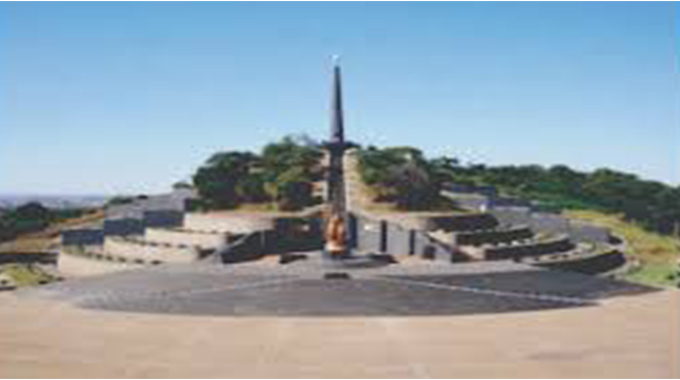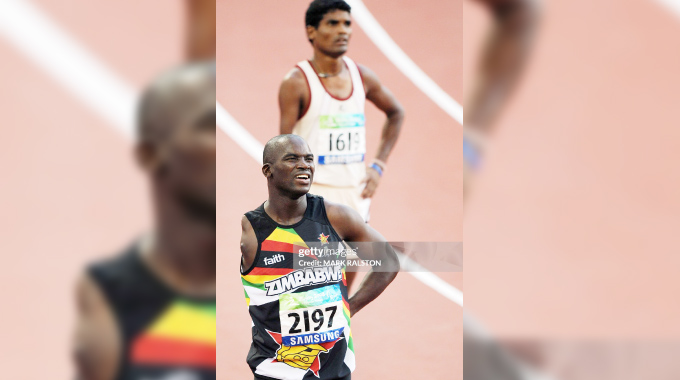National Heroes’ Acre: A symbol of sacrifice, bravery

Zimbabwe’s independence came about through suffering and supreme sacrifice by patriotic sons and daughters who waged a long and arduous struggle against the colonial regime.
Our independence was not given to us at the Lancaster House constitutional conference in December 1979 but was won on the battlefield in 16 years of bitter war of liberation, which resulted in tens of thousands of our people perishing.
The National Heroes’ Acre, our revered shrine, is the pride of the people of Zimbabwe. It is a symbol of bravery and selflessness for those whose remains are laid to rest there.
Towering majestically is the Tomb of the Unknown Soldier, which symbolises the final resting place for tens of thousands of Zimbabweans who sacrificed their lives for the sake of our freedom and independence but whose remains are scattered in valleys, disused mines, caves, unknown graves and mass graves spread across the nation and neighbouring states.
Zimbabwe’s war of liberation was the epic of the revolutionary spirit that characterises modern Zimbabweans. We are fighters, hence our own liberators — in every sphere, political, economic and social.
Before independence many of our people were detained under sub-human conditions by the notorious Rhodesian regime, and some of them spent long spells in detention without trial. Tens of thousands of these fallen fighters sacrificed their lives to free Zimbabwe.
In honour of these fallen heroes, the Government built shrines across the country where declared heroes are interred.
All heroes’ acres are administered by the Department of Museums and National Monuments.
Conferment of hero status is a great honour in recognition of these gallant sons and daughters of Zimbabwe. The heroes are classified in three categories and generally reflect the departed hero’s or heroine’s contribution to the nation. The status is determined by the State on a case by case basis.

According to the National Heroes Act [Chapter 10:16] designation of heroes is done by the President “where the President considers that any deceased person who was a citizen of Zimbabwe has deserved well of his country on account of his outstanding, distinctive and distinguished service to Zimbabwe, he may, by notice in the Gazette, designate such a person a national, provincial or district hero of Zimbabwe.”
National hero status is the highest honour that can be conferred on an individual and the recipients are entitled to be buried at the National Heroes’ Acre.
The other status are liberation war hero (formerly provincial hero) and liberation hero (formerly district hero). The former are buried at provincial heroes’ acres while the latter are buried at district shrines if their families agree.
These sacred shrines were built to honour the heroes of Zimbabwe, past, present and future. The heroes include national leaders, freedom fighters and dedicated supporters of the national liberation struggle who participated in or undertook revolutionary activities that contributed to the final victory and declaration of independence in April, 1980.
These heroes laid down their lives for Zimbabwe to be free. They subordinated their personal interests to the collective interest of Zimbabwe as a whole. They cherished qualities such as loyalty, dedication and patriotism .
Their actions were guided by the ideals of comradeship and love. Their support for the cause of freedom and justice was indeed unwavering. They accepted and endured pain, suffering and brutality with fortitude, even unto death.
Some of the heroes include contemporary and future sons and daughters of Zimbabwe of the same calibre as those fallen heroes whose dedication and commitment to the nation of Zimbabwe justify their burial at the sacred spots.
The National Heroes’ Acre
The main features that comprise Heroes’ Acre Are:
1. The statue of the Unknown Soldier, commemorating the many Zimbabweans who died in the liberation war. The statue is bronze–sculptured and consists of three heroic figures, one woman and two men, a flag pole with the Zimbabwe national flag and a tomb for the Unknown Soldier.
2. The 40–metre high tower carrying the symbolic Eternal Flame which was lit at independence celebrations and depicts the spirit of independence. This tower is the highest point of the Acre and can be seen from many parts of Harare. It has a viewing deck from which most of Harare and adjoining areas can be seen. This tower, built at the top of the southern hill is accessible through a flight of stairs extending from the foot of the hill.
3. The main statue, the Tomb of the Unknown Soldier, and the graves are flanked by two high walls on which engraved and painted various scenes of the armed struggle and these murals bear witness to the rich and diverse culture of the country. The two mural shrines, on either side of the Tomb of the Unknown Soldier on the walls of the hill bear a perched Zimbabwe Bird. On the walls there are murals depicting the various stages of the freedom struggle from the 1960s to the end of the 1970s. The murals pictorially tell the history of Zimbabwe’s liberation war.

4. A terraced area with three rows of graves on the left of the main statue and three rows on the right
5. Seating space: the terracing of the hill on the western side of the main monument provides seating space for about 5 000 people for funerals or ceremonial occasions. Trees, shrubs, flowers and couch grass have been planted to beautify the place.
6. A Revolutionary Museum is to be built at the top of the western hill as soon as the work has been completed. A variety of war materials will be displayed in the museum as a permanent record of posterity.
Natural landscape
The landscaping at Heroes’ Acre has been kept as natural as possible. The burial complex is surrounded by a well–preserved typical wood land although some non-indigenous trees have been planted on both sides of the road to the acre.
The burial complex is almost completely naturally landscaped with hard surface stone–work. Additional landscaping has only been required in small areas. A lawn has been grown adjacent to the steps but natural rock has been exposed in the remainder of the area with patches of lawn between the rocks.
The subtle, low-key arrangement emphasises the strength and performance of the sculpture and monuments. These features have a purpose and significance.
The Eternal Flame signifies that Zimbabwe shall live forever, the souls of its fallen heroes are alive. They, and the collective will of the masses are indomitable and indestructible, they live forever.
The Eternal Flame also indicates that man’s desire for freedom has always existed since the beginning of time and will always exist. The collective desire is infinite. Because of its infinite nature, it defeated the forces of colonialism in Zimbabwe and it defeated external forces of destabilisation and internal forces of reaction.
After achieving independence, the Zimbabwean masses are becoming enlightened by the torch of knowledge as they are rehabilitated and integrated fully within their community, taking part in the activities.
The Eternal Flame points the way forward and beckons the people to work hard for the higher cause of nation building.
The Tomb of the Unknown Soldier represents the many freedom fighters and freedom loving people who died during the armed struggle. It preserves the memory and qualities of these soldiers and people and acts as an inspiration to the youth so that they can emulate the strength and courage of these heroes.
The statue of the three freedom fighters is majestic and they seem to breathe. They possess some kind of dynamism and vitality. Energetic, confident and assured, they blend naturally with their surroundings showing that they are at home.
This piece is extracted from A Guide to the Heroes Acre, published by the Ministry of Information, Publicity and Broadcasting Services











Comments